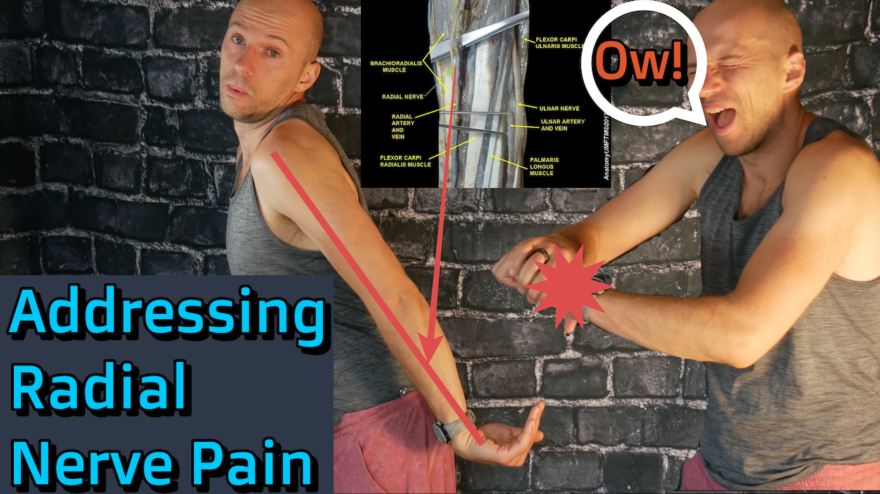Ever get pain going down the outside of your arm when you are weight-bearing? Numbness, tingling, the whole shebang?
If you notice issues that resemble this, you are likely dealing with radial nerve sensitivity.
In order to make the radial nerve less sensitive, you need to increase movement, space, and bloodflow to the nerve.
How do you do that? Watch this video below!
Reducing strain on the radial nerve
Nerves need three pieces to be healthy:
- Movement
- Space
- Bloodflow
In order to maximize radial nerve excursion, we have to look at the maximally lengthened position of the nerve, which is as follows:
- Wrist flexion and ulnar deviation
- Forearm pronation
- Elbow extension
- Humeral internal rotation
- Humeral abduction
- Scapular depression
- Contralateral cervical sidebending
You can check the test for this below in this video:
When you take a look at these motions, do you notice a common theme of where you need to drive motion? If I want to create space around the nerve (or day I say….EXPANSION), you need to drive what?
Internal Rotation
And if you need internal rotation, you gotta put air where?
Anterior Chest Wall
So the first line of defense to maximize nerve excursion, you have to maximize anterior thorax expansion and internal rotation. If you do that, you’ll maximize space around the nerve, which can reduce sensitivity.
But fam, that may not be enough!
You may also have to restore the mobility of the nerve. The neurodynamics.
Basically, you can start with moving the nerve along it’s path with little tension. We call these actions sliders. They look like this:
Once you have that, then you can maximize the “stretchability” (technical term) of the nerve by driving tensioners:
Photo credit: https://commons.wikimedia.org/wiki/User:Anatomist90

